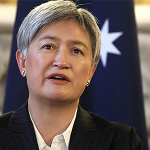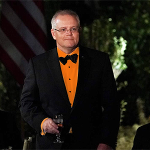ANSTO – the Australian Nuclear Science and Technology Organisation – recently celebrated 70 years since Australia’s nuclear age began in Sydney.
On April 15, 1953, Australia entered the nuclear science arena as the Atomic Energy Act came into effect. The Australian Atomic Energy Commission (AAEC) followed and in 1987 the AAEC evolved into ANSTO as it’s known today.
ANSTO is the home of Australia’s most significant landmark and national infrastructure for research. Thousands of scientists from industry and academia benefit from gaining access to state-of-the-art instruments every year.
Thousands of visitors, including many schoolchildren, have safely toured the site at Lucas Heights, which is located 40km southwest of the Sydney CBD. They had the opportunity to learn a great deal about nuclear science as a result of that experience.
I recently became one of those visitors when I was invited to a 3-hour escorted tour of their facilities. As former Executive Director of the National Safety Council of Australia (NSW/ACT) I was particularly interested in their WHS procedures as well as the management of waste, as the latter could impact on the wider community if poorly managed.
What impressed me most was seeing just how advanced we are as a nuclear nation. Despite being relatively small in scale compared to a full civil nuclear energy plant, it has much the same range of issues and complexities to deal with. And it certainly appears to successfully do so at both their Sydney and Melbourne campuses.
During his visit to Australia in July 2022, International Atomic Energy Agency (IAEA) Director-General Rafael Grossi expressed deep confidence in Australia, acknowledging the solid foundations established through ANSTO since its formation.
The obvious question is, why is the Albanese Labor-Greens government, together with the Teals, opposed to extending our obvious expertise into producing nuclear energy on a commercial scale, as proposed by Opposition Leader Peter Dutton’s LNP?
As you’d expect, there are a number of reasons for both their reluctance to accept nuclear despite it being cheap, reliable and emissions-free and their manic obsession with unreliable, hugely expensive, and environmentally/socially disastrous wind, solar, and battery renewables.
Political factors play a major part. The Greens and Teals are directly opposed to nuclear, but for different reasons.
The Greens have shown beyond doubt that they want to disrupt society across as many issues as possible. They are doing this on a regular basis – even appearing to stand with crowds that hold sympathies toward recognised terrorist groups.
People who think the Greens are still a well-meaning environmental group like they were under Bob Brown are fooling themselves – they are not!
In the case of the Teals, they started life as political entities via funding from Climate 200, whose primary financial supporters are deeply entrenched in the lucrative and heavily taxpayer-subsidised renewables industry.
The Teals are ignorant pawns in the high-stakes game of climate change and the hysterical pursuit of ‘saving the planet’.
There is a lot of money involved in this issue and ordinary Australians are being played by the so-called elites, including left-wing mainstream media such as the ABC.
A good example is the almost total lack of media reporting on the very recent and hugely important US Department of Energy’s Nuclear Lift-off Report that includes significant findings:
The system cost of electricity with nuclear and renewables combination is 30 per cent lower than just renewables.
The jobs from nuclear are 50 per cent higher paying than solar or wind.
Nuclear provides the lowest emissions, is the most reliable form of energy production, has the lowest land use requirement, and lowest material usage.
The report also outlines a pathway for the USA to reach their ambition to triple their nuclear energy capacity by 2050, in direct contradiction of our government’s refusal to even legalise nuclear energy.
The US DoE report has dealt a major blow to anti-nuclear campaigners in Australia.
It also directly contradicts the policy position of the Albanese government.
The report debunks repeated claims that nuclear is ‘too expensive’ and will ‘increase power bills’ and outlines various other benefits of nuclear energy.
The DoE report could not disagree more with Australian anti-nuclear campaigners and the Albanese Labor-Greens government, Teals, and other sources of ignorance.
The full report can be read here.
Their report also completely debunks the much-criticised report produced by CSIRO GenCost that our Minister for Climate Change and Energy, Chris Bowen, refers to constantly as his renewables crusade ‘Bible’.
This is despite the fact that the CSIRO GenCost report totally failed to accurately estimate the likely total cost of renewables compared to nuclear.
It also used in its modelling a 30-year life for a nuclear plant instead of the far more accurate 80 years. This created a false financial outcome by not comparing the total cost of nuclear with renewables over an 80-year period.
It also totally neglected the fact that waste management costs for renewables will be many times greater than for nuclear. There will be the need to replace wind turbines and solar panels three or four times during an 80-year period.
And who is going to be responsible for dismantling and disposing of the millions of components – some of which have toxic ingredients?
Many people, including some of our top scientists and engineers, believe that the CSIRO GenCost report was simply designed to support the Albanese government’s narrative as depicted in their childish three-eyed fish media splash some months ago.
‘Blackouts’ Bowen promoted that infantile campaign in his usual gloating, arrogant manner and then compounded his evident stupidity by stating that he had not even read the US report – dismissing it completely!
And this typifies the problem we face with the Albanese government. They have Ministers like Bowen, Wong, Burke, Plibersek, Clare and, of course, Albanese whose sole objective is to win the coming election and thereby remain in power; they simply don’t want to suffer the ignominy of becoming a one-term government.
Hopefully, in the very best interests of our country, they will fail to achieve that objective because we need a government that protects our borders, controls immigration, decreases our cost-of-living, and helps young people to buy their own homes.
It’s becoming clearer on a daily basis that none of that will happen under the current Labor-Greens government.
One major impediment to reducing living expenses is the rising cost of energy.
Renewables alone will continue to increase the cost of electricity and that will in turn increase the prices paid at our shops and for commercial or residential electricity usage.
Nuclear energy will add to the range of resources available to us – as it has done in many other countries.
Nuclear power plants operate in 32 countries and generate about a tenth of the world’s electricity. Most are in Europe, North America, and East Asia.
The United States is the largest producer of nuclear power, while France has the largest share of electricity generated by nuclear power, at about 70 per cent.
The only way we are going to catch up with the rest of the world in relation to nuclear energy production is to replace our current government with Peter Dutton’s Liberal-National Coalition.
That might be hard to accept for some people – but it’s an undeniable fact.
Many thanks to the highly professional staff at ANSTO who provided me with a very interesting tour of their facilities. Thanks also to Nuclear for Australia info@nuclearforaustralia.com for their technical input and Johannes Leak for his wonderful cartoon depicting Chris Bowen – undoubtedly the worst Minister for Energy this country has ever had to endure!









